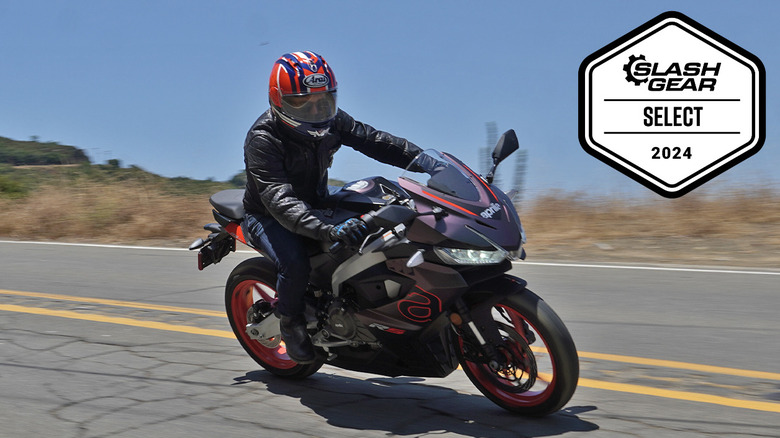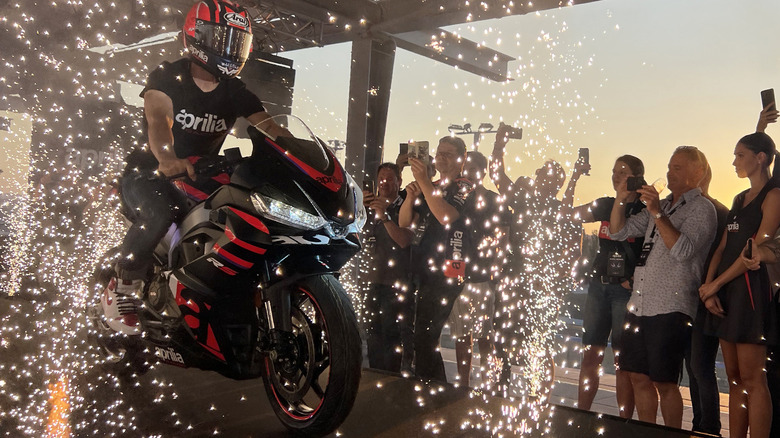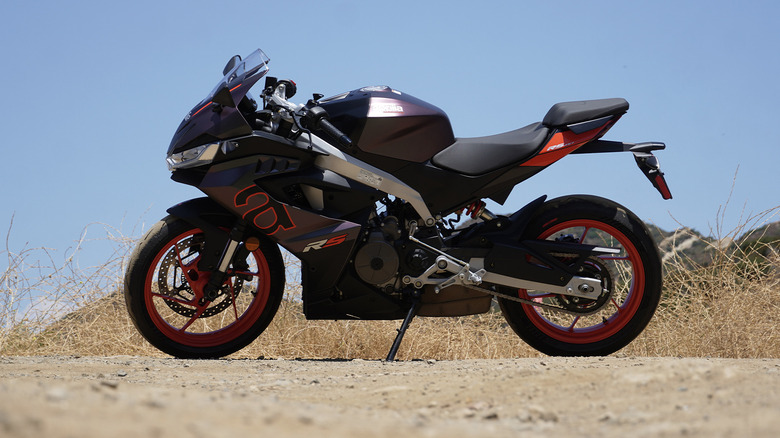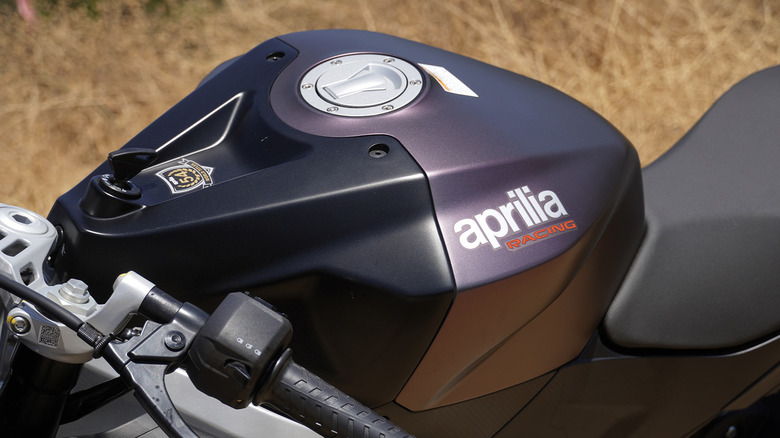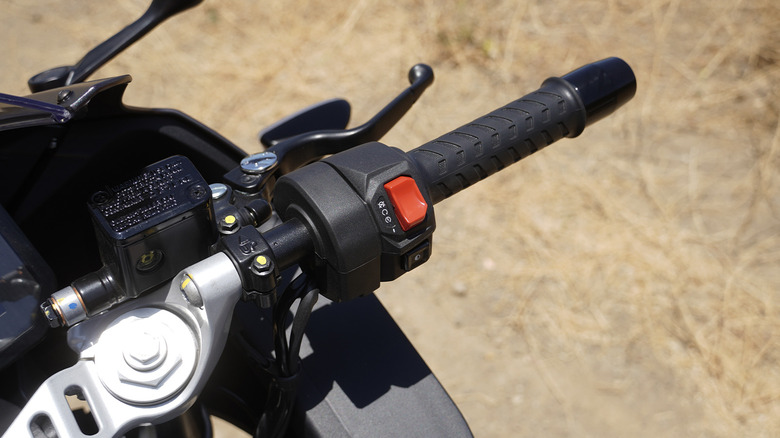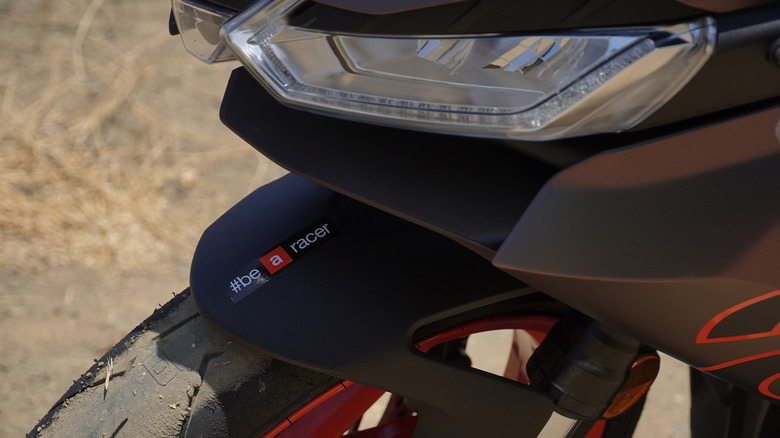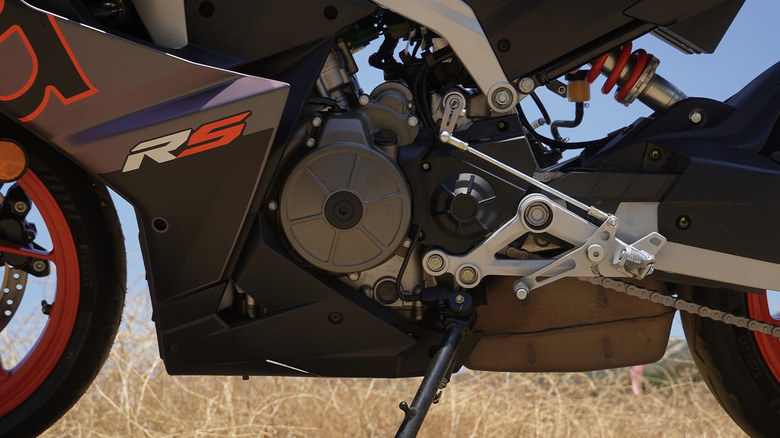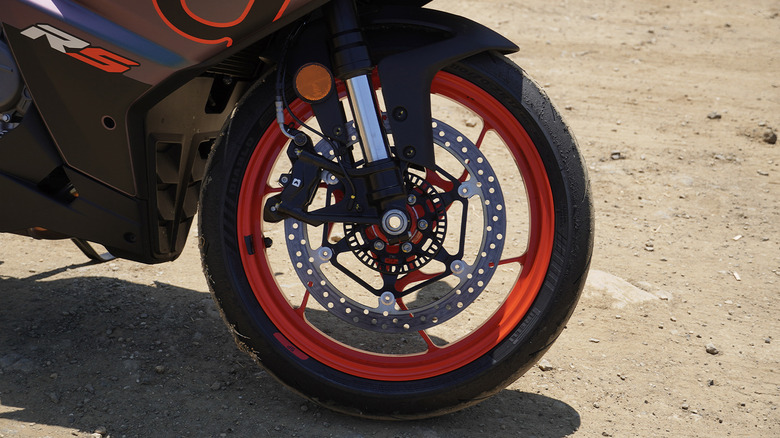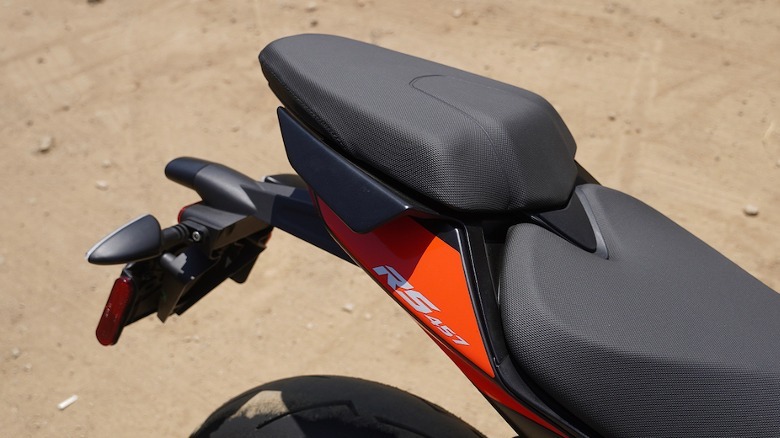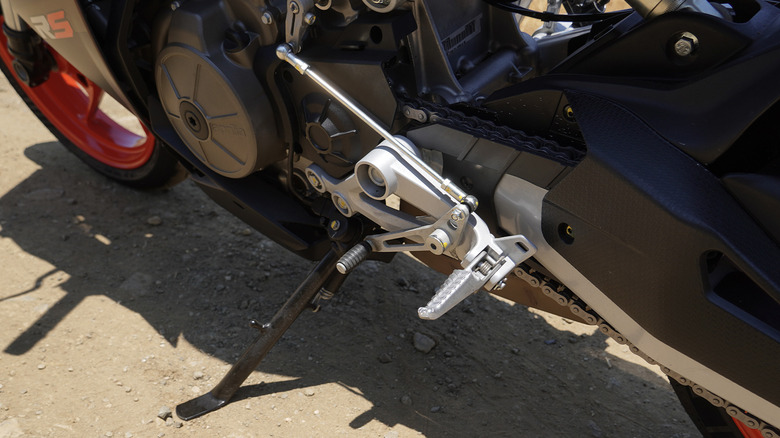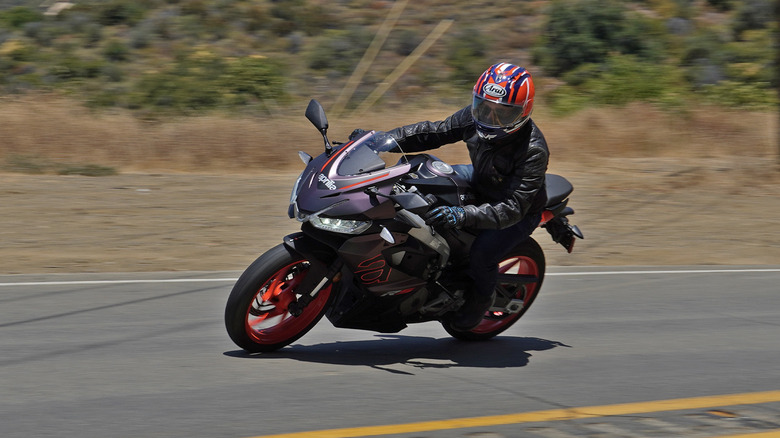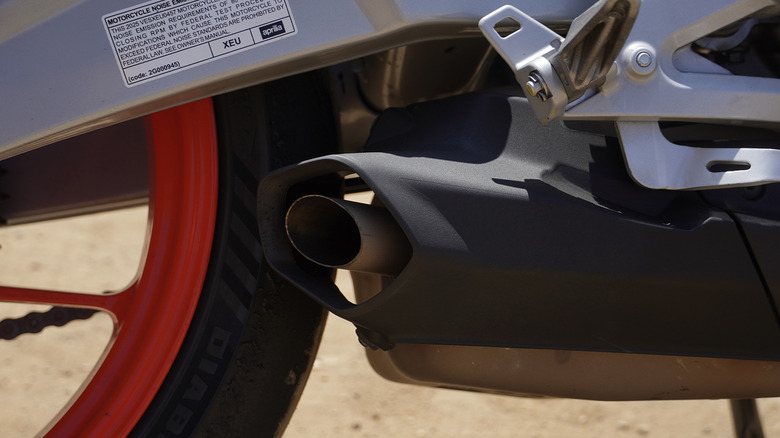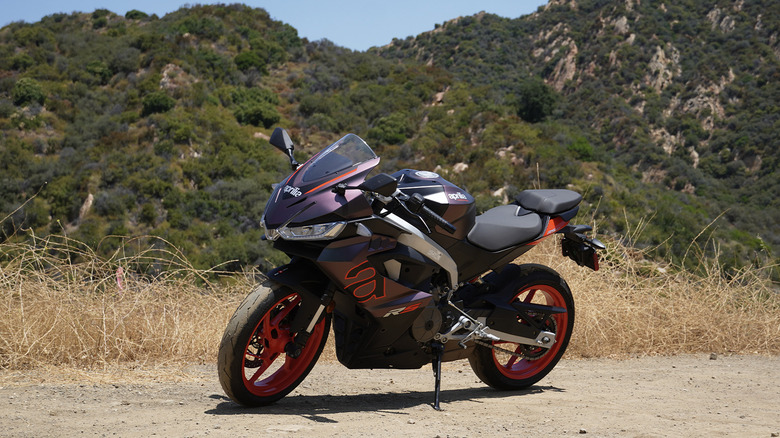2025 Aprilia RS 457 Review: Can Track Toy Thrills Really Come At An Entry Level Price?
- Far and away the most exotic of today's featherweights
- Just enough premium features to appease the Italian ethos
- Competitively priced in the segment
- Powerful enough to attract beginners and track rats alike
- Geometry may challenge taller riders
- Not quite as much grunt as expected for a new motor
- Suspension lacks refinement
Last fall, I visited Misano World Circuit Marco Simoncelli on Italy's Adriatic Coast to watch my first MotoGP race. The screaming spectacle of powerful engines and impressive human performance, especially on summer days easily eclipsing 90 degree Fahrenheit, absolutely blew my amateur motorcycle rider's mind. Never had I ever begun to even contemplate such impressive pace on two wheels, emphasized so much more in the real world than on TV screens watching from home.
While there, Aprilia unveiled a new entry-level sport bike, the RS 457. I leapt at the opportunity to watch the official unveil ceremony, sit on the bike, and check out the components up close. The exotic styling, compact packaging, and small-displacement engine piqued my interest, given that the RS 660 sat at the top of my list of favorite new sport bikes, then and now. But Aprilia reps on hand remained tight-lipped about any details at Misano, and especially the official plan for pricing.
Since then, early press previews of the RS 457 included only track riding, at Modena in Italy or at Laguna Seca in the United States. Now that early RS 457 deliveries have begun here in the United States, Aprilia brought a loaner straight out for me to test on the winding roads of Malibu, since real road riding impressions might better attract beginner riders.
RS 457 mysteries solved
Many of the mysteries that cropped up at Misano officially received answers later. Specifically, the 457cc parallel twin puts out peaks of 47 horsepower and 32 lb-ft of torque, with 82% of that torque figure available at just 3,000 RPM. The whole bike tips the scales at a scant 350 pounds dry, or 385 pounds wet. And the seat height, which I tested in Italy but only with the bike on a rear stand, clocks in at relatively low 31.5 inches.
The exotic looks on display at Misano also pale in comparison to the bike that arrived at my apartment in West LA. Sure, the black and white launch colors, officially known as "Racing Stripes" with purple accents or "Opalescent Light" for the pearly white, do accentuate the angular styling and hints of aero. But the "Prismatic Dark" serves the shape best, with a slight metallic sparkle of dark eggplant purple, plus red wheels in classic Aprilia fashion.
Pricing versus the competition
Best of all, a purple or white RS 457 starts at just $6,799 while the black livery costs only $100 more. That just about splits the difference between the RS 457's main competitors, the Ninja 500 and KTM RC390. Diving into the specs and stats requires a bit of patience, but the Ninja uses a 451cc engine good for 51 horsepower, with a 381.5-pound weight and a starting price of $7,899. The RC390 is lightest on the scales, at 364.5 pounds wet, and its 373cc engine is good for 44 horsepower; pricing starts at $5,899.
All those numbers pale in comparison to my darling RS 660, however, which ramps output up to 100 horsepower in Factory spec, with a wet weight of 403 pounds but a much higher price tag at $11,749. But the little 457 sibling enters the market with a few surprises. It's actually not related to the 660 at all, because Aprilia started from scratch and wanted to use the only aluminum frame in the segment.
First impressions of the RS 457
Even on first impressions, I noticed the RS 457's seat rides a little lower, the bars a little higher, and the pegs seem slightly too far rearward for my size at 6'1" with long limbs. But straddling the low-ish seat, that narrow waist let my shimmy around the flickable, low-slung weight. And the tank design appeared perfect for tucking my knee in tight.
The lightweight construction contributes to a more budgetary riding experience than the RS 660, which I noticed immediately while pulling away and heading up to Malibu. The stock two-into-one exhaust trembles but never grumbles, the handlebars rotate with each tiny muscle movement, and the center mass loves to lean. Short gearing helps the small engine rev up to 10,500-RPM redline easily, and the 457 loves to rip around in second or third gear, and occasionally even up to fourth, on most roads where I typically stay in second and only occasionally shift up to third.
A few premium details stand out
Other details counteract the low pricing and economical materials. Thicker grips lend a sense of substance while working throttle and clutch—the cable clutch providing a reasonable amount of feel despite less than average resistance and that ride-by-wire throttle program working far better than some other bikes that ditched cable throttles years ago (ahem, Harley).
A nice billet upper triple that integrates with semi-clip-ons, and simple controls for the adjustable ride modes, also contribute to the hints at Italian exoticism, and I quickly figured out how to flip between Wet, Eco, and Sport, as well as adjusting the traction control programming in each mode.
Tires and suspension make a big difference
Coming straight from the Laguna Seca track day, my bike rode on non-stock Pirelli Diablo SuperCorsa tires inflated to 35 PSI cold and showing a bit of wear almost fully to the edge. But the stock sizing of 110/70 and 150/60 on 17-inch wheels still looked hilariously narrow. Chalk the appearance up to the advantages of weight savings, which enhances the sensation of tip-in and responsiveness.
On the city streets and Pacific Coast Highway up to the canyons, the manually adjustable suspension definitely pales in comparison to the RS 660's (though I suspect the over-inflated track tires probably didn't help). The forks allow for 120-millimeters of travel and preload adjustability only, while the rear damper controls the steel swingarm and also allows for preload adjustment. On my own 457, I would definitely dial the suspension in softer for street and weekend riding.
Adjusting to the little RS 457
Simple physics also suggests that the bike's own weight, or lack thereof, creates less momentum to absorb bumps and cracks in the road. (And, for context, the Ninja 500 comes with non-adjustable forks.) I started to wonder how this setup might do on track, especially such a large and fast circuit as Laguna Seca with so much elevation change. Tooling through traffic, the RS 457's power delivery comes on plenty at low revs, though the sensation of building torque petered out if I twisted my wrist too hard from the early RPMs.
Instead, I started to stick in the higher end of the tachometer once the little 457cc engine warmed up. The light clutch let me up and downshift regularly without my left hand starting to tire, yet I also wound up hitting the redline at 10,500 fairly regularly. And not just because the parallel twin pulls hard right up to fuel cutoff, but I suspect the restrictive exhaust also provided less of an auditory signal as I adjusted to the bike.
A track attack proposition
The prospect of wringing out the higher RPMs on track sounds fairly enjoyable, though a tighter and more technical circuit seems best. On Laguna Seca, I imagine that the long straights and hillclimbs probably felt interminable, even if holding momentum through corners on a bike so lightweight—especially over the corkscrew—probably makes up for much of the power differential versus a higher-displacement bike.
The single front brake disc might not quite enjoy track time either, even if road riding never left me doubting the 320-millimeter rotor and four-piston caliper's capability. The low weight helps, of course, but braking performance from a single disc always pales in comparison to doubles. Hauling a passenger around on the pillion pad, either during braking or acceleration, might create some sketchy moments. A single seat coming standard, with the two-up as optional, probably makes more sense.
A quickshifter as accessory
I also hopped on the RS 457 and surprisingly learned that the quickshifter I seemed to remember seeing in Misano only comes as an accessory. Given the short gearing and regular shifting, plus the redline of "only" 10,500 when power truly starts to set in above 8,000 RPM or so, spending the $399 including dealer install and plug-in absolutely becomes mandatory on track. And, I'd argue, for street and canyon riding, too.
The joys of riding a slow bike fast
Up in Malibu, the RS 457 perfectly typifies the concept of riding a slow motorcycle fast. True liter bikes pull so hard out of corners that the next blind turn can come up far too quickly, and even when braking hard, the ability to exceed speed limits and the pace of commuter cars can quickly turn dangerous. On the 457, I managed more of a steady pace, braking lightly and carrying speed through wider arcs purposefully.
On a few longer stretches of road, I opened the engine up through to fifth but mostly stuck in second, third, and fourth, happily feathering the clutch while focusing on how my body positioning affected lean angle and responsiveness. Leaning out further than typical on public roads let me hold the bars up higher, depending less on tire edge and staying on maintenance throttle longer.
More rumble, please
Even in the echoic hills, though, the RS 457's exhaust lacks both the deeper bass and high-rev wail more typical of Italian motorcycles. But the prospect of installing louder, free-flowing pipes plus a quickshifter, on top of the price tag and dealer prep, forced me to start remembering the Kawasaki Ninja ZX-4RR that I rode on the tight circuit at Streets of Willow as well as Laguna Seca in the preceding two months.
The ZX-4RR's personality overlaps with this entry-level Aprilia in a few facets, mostly the lightweight and responsive handling—despite the fact that the Kawasaki weighs about 10% more. Both reveal every minuscule muscle movement to the rider, and though the Kawasaki's silky-smooth inline-four revs up to 16,500 RPM (or even a little further), the Aprilia's lower-end torque and weight savings might allow for similar performance on public roads. Of course, on track the Kawasaki's top-end and features probably make more of a difference.
2025 Aprilia RS 457 Verdict
I love the positioning of both the RS 457 and ZX-4RR with similar intentions to attract beginner and smaller riders, while providing enough appeal for experienced motorcyclists to ride as a commuters or as a track trainer. Yet my brief time with the RS 457 ended with me surprised that Aprilia left the prospect of a Tuono with similar packaging on the table. A more upright, comfortable posture and perhaps a bit more suspension travel might allow the Tuono to entice to an even larger swath of riders into the Aprilia family. One is almost certainly on the way, as well as a Trofeo version of the RS 457 in similar fashion to the Factory packages for the RS and Tuono 660.
Personally, that RS 660 still ticks more boxes for me, mostly thanks to the additional power but also the denser sensation and slightly more aggressive geometry. Then again, the budget question certainly matters, especially for beginners (those not spoiled by a never-ending string of press loaners, anyway).
Aprilia clearly targeted a very specific combination of specs and features for the RS 457, and the resulting bike available now certainly achieves those specific goals. Hopefully, reliability for the all-new RS 457 holds up, too. If so, riders who understand and appreciate the unique appeal of a low-displacement motorcycle with track potential and a hint of exoticism need not look anywhere else.
